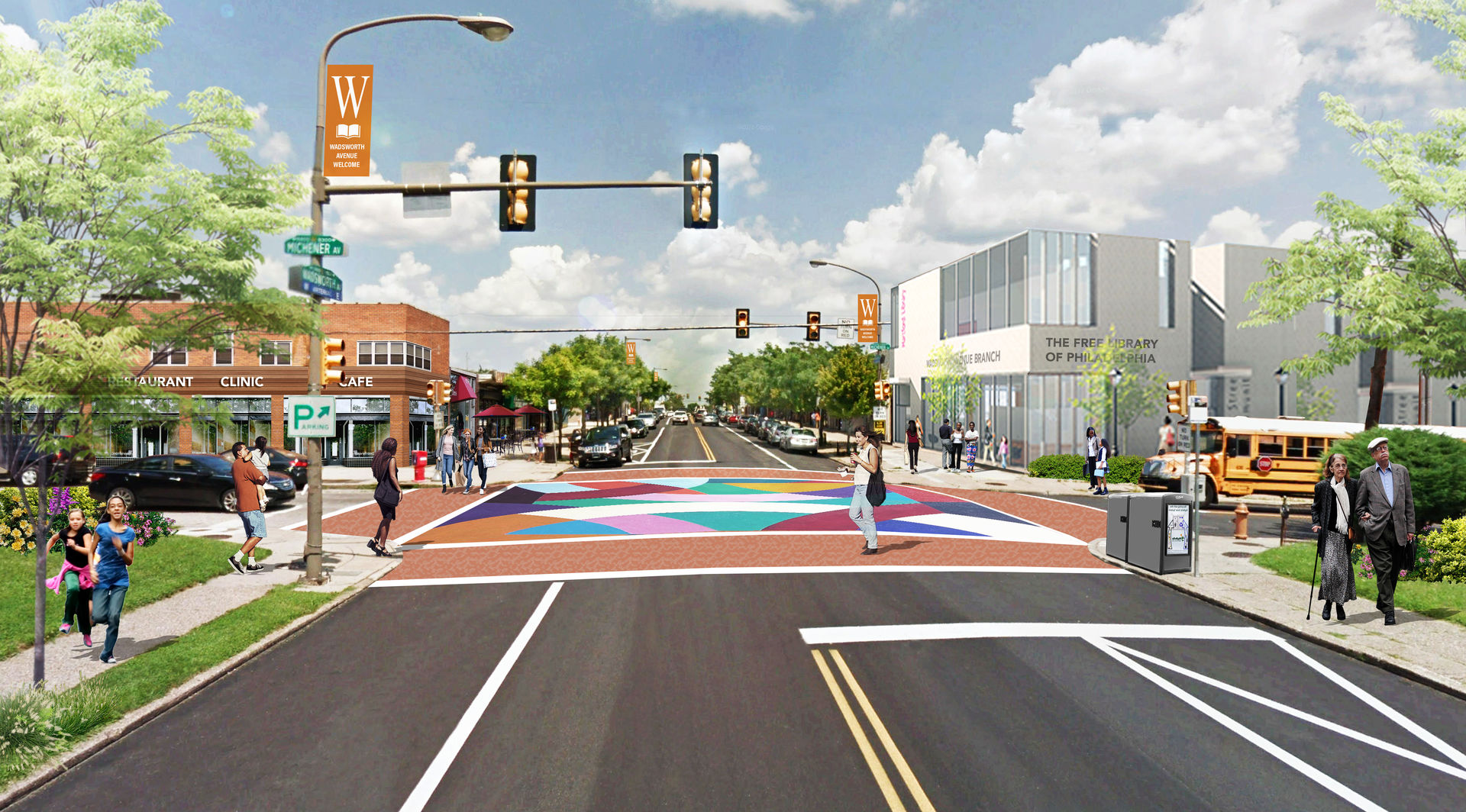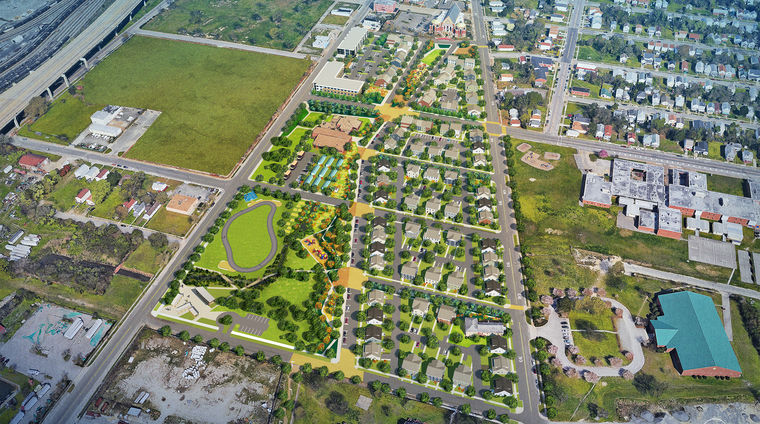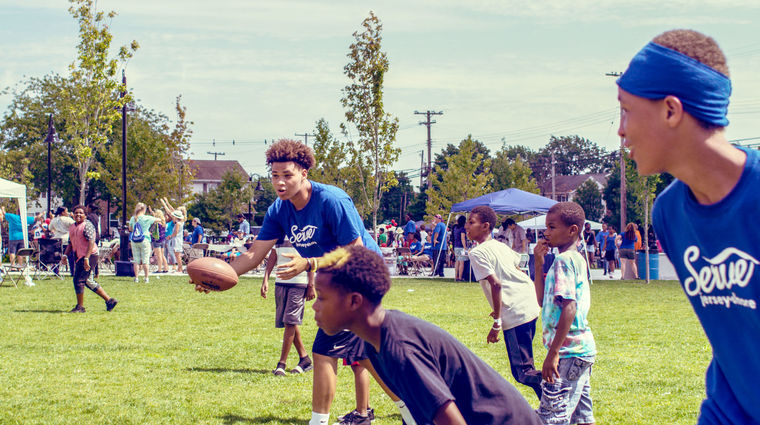9th District Commercial Corridor + Neighborhood Plan
planning, urban design, neighborhood plan, middle neighborhoods, community designWRT is working with the 9th District Council Office of Philadelphia Councilwoman Cherelle L. Parker to leverage the District’s high homeownership rates and variety of walkable, transit-served commercial corridors to build and maintain diverse, sustainable, and affordable neighborhoods.
At 162,794 residents, the 9th District encompasses over 10% of the City’s population and includes 64.1% owner-occupied homes compared to the City’s rate of 52.3% owner-occupied homes (RES 2017 Estimates). The 9th District contains a wide range of housing types from multi-family apartments and rowhomes, to more suburban-style detached single family houses with front and rear yards. A majority of the 9th District would be classified as “middle neighborhoods,” relatively stable neighborhoods without extreme poverty or wealth that are reasonably affordable and relatively safe. Because these neighborhoods are not often facing significant challenges, rapid development pressures, or decline, they are generally not the priority or focus for public investment dollars.
The 9th District includes a wide variety of communities, from new immigrant enclaves to older established African American neighborhoods, with a concentration of small locally owned businesses. This varied mixture of racial and ethnic backgrounds translates into a wide variety of businesses, organizations, and eateries found along the District’s commercial corridors.
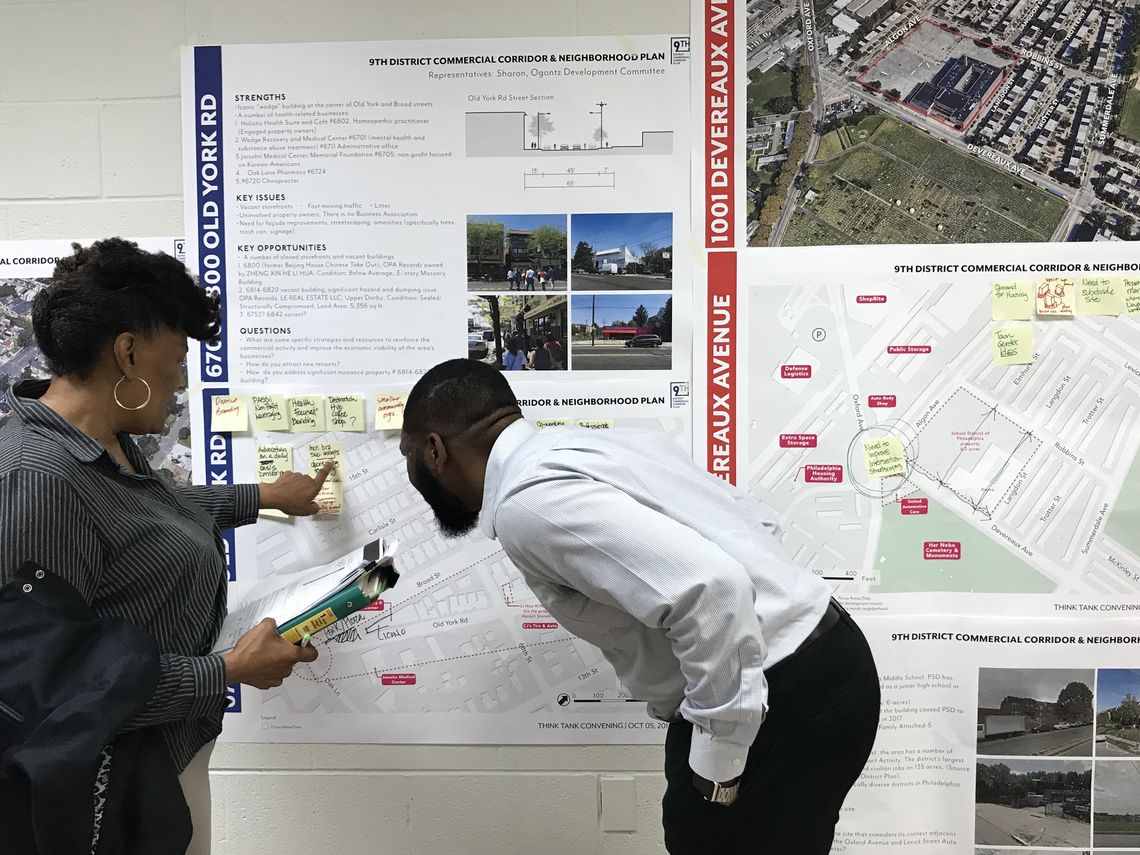
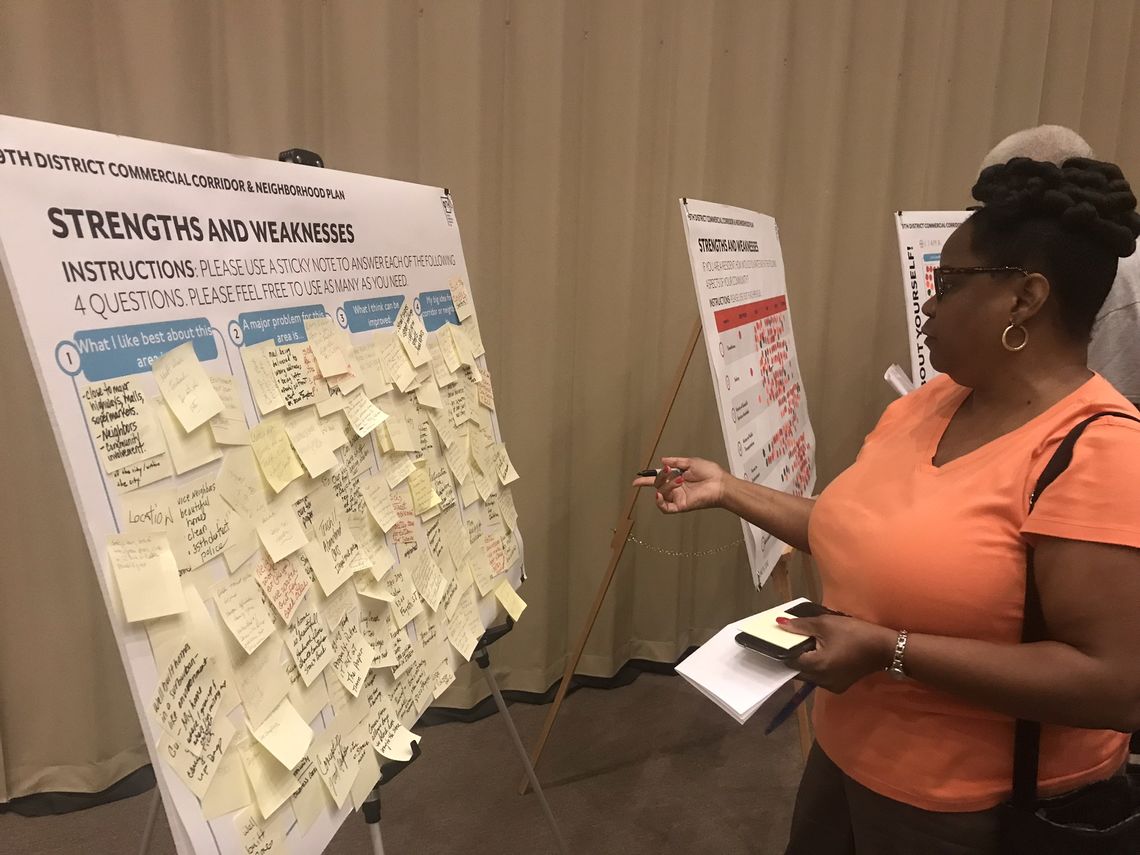
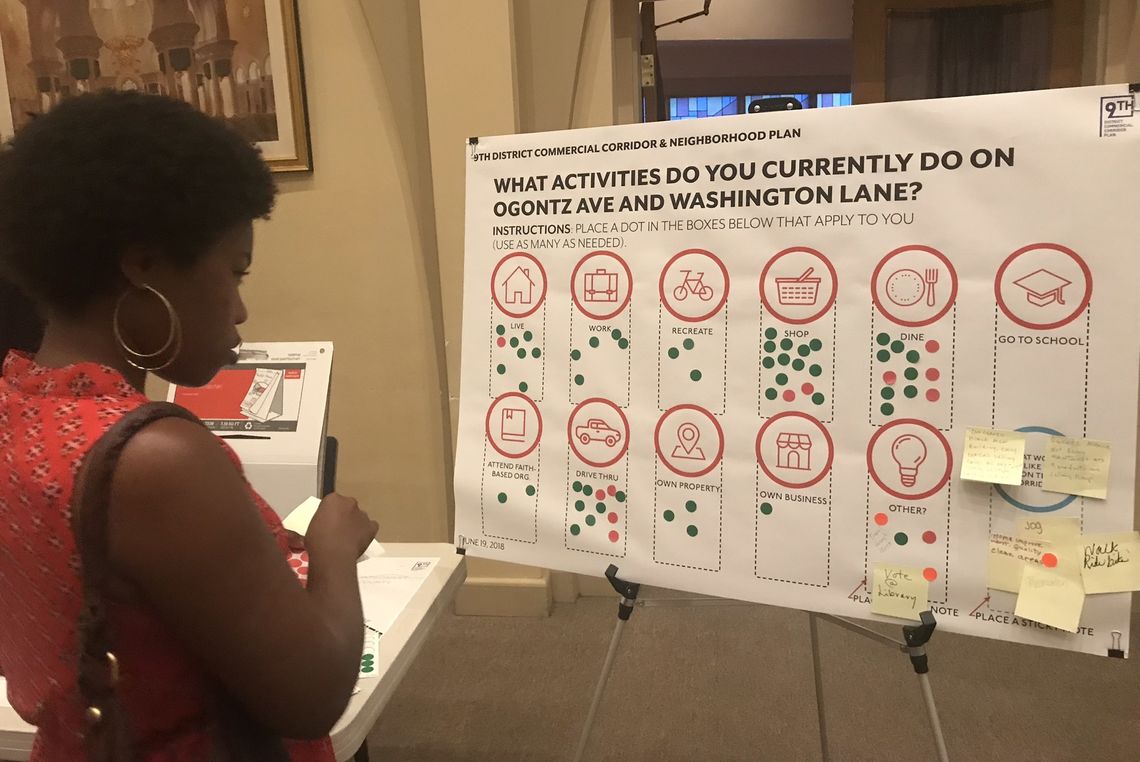
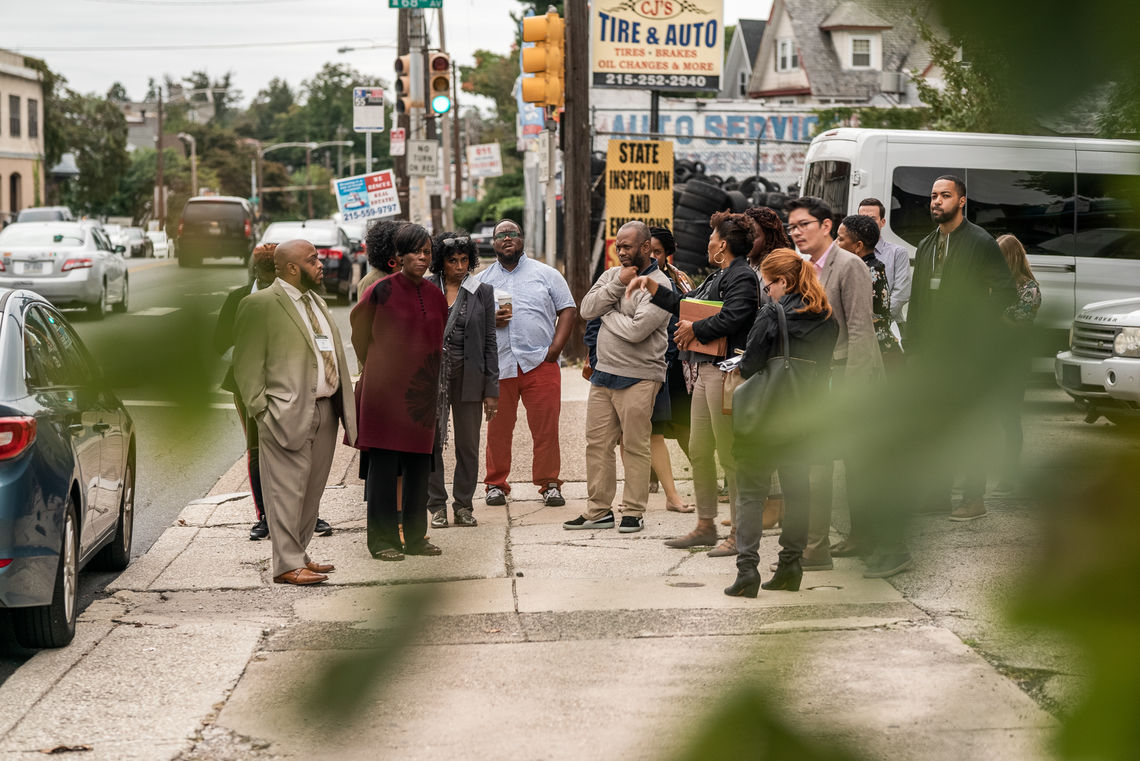
Working with area stakeholders, businesses, and property-owners, the WRT planning and design team is in the process of developing innovative, data-driven strategies to address a range of issues including aging housing stock and aging homeowners without access to capital for home improvements; competition from adjacent suburban shopping centers in adjacent Montgomery County and changes in shopping patterns due to online shopping; and the need to diversify retail services while improving the urban environment through cleaning, greening, and beautification efforts. Moving forward, Councilwoman Parker will use the proposed strategies to support legislation and leverage funding for neighborhood investment.
The foundation for the study involved analyzing data from a wide variety of sources including the U.S. Census, ESRI online databases, City of Philadelphia GIS, and on-the-ground surveying and stakeholder input. The WRT team analyzed data related to transit access, open space, pedestrian safety, cleanliness, crime, retail diversity, and housing conditions.
An extensive existing condition report with supporting maps was developed as an initial deliverable and forms the basis of the plan.
A robust community and stakeholder engagement process included walking tours of the commercial corridors, advisory committee work sessions, a one-day Think Tank convening with a panel of experts representing fields from design to real estate to the arts community, multiple public meetings for residents to provide input, and workshops with City agencies to align the plan with citywide efforts.
Emerging strategies emphasized the needed resources to help homeowners maintain and stay in their homes ("At Home in the 9th”), beautification, and branding to support clean, safe commercial corridors to attract new businesses and shoppers.
Specifically, recommendations target specific business types that can thrive in today’s changed retail environment and promote the neighborhoods in the 9th Council District as vibrant, affordable places to live, learn, shop, and play.
Related Projects
Working alongside communities, we shape aspirational yet implementable plans ranging in scale from neighborhood, corridor, and district plans, to regional and citywide plans, to park and resiliency master plans.
